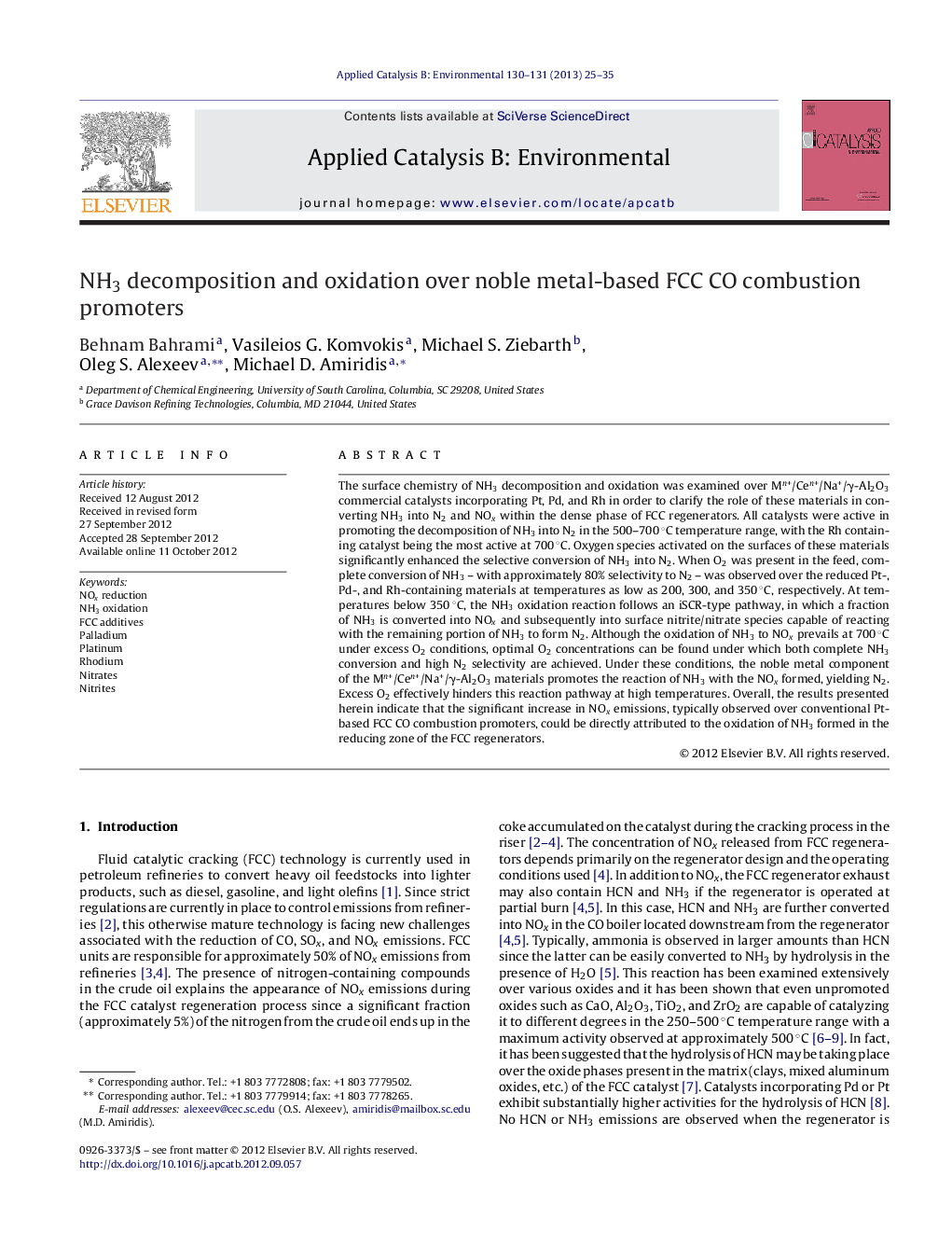| کد مقاله | کد نشریه | سال انتشار | مقاله انگلیسی | نسخه تمام متن |
|---|---|---|---|---|
| 45812 | 46423 | 2013 | 11 صفحه PDF | دانلود رایگان |

The surface chemistry of NH3 decomposition and oxidation was examined over Mn+/Cen+/Na+/γ-Al2O3 commercial catalysts incorporating Pt, Pd, and Rh in order to clarify the role of these materials in converting NH3 into N2 and NOx within the dense phase of FCC regenerators. All catalysts were active in promoting the decomposition of NH3 into N2 in the 500–700 °C temperature range, with the Rh containing catalyst being the most active at 700 °C. Oxygen species activated on the surfaces of these materials significantly enhanced the selective conversion of NH3 into N2. When O2 was present in the feed, complete conversion of NH3 – with approximately 80% selectivity to N2 – was observed over the reduced Pt-, Pd-, and Rh-containing materials at temperatures as low as 200, 300, and 350 °C, respectively. At temperatures below 350 °C, the NH3 oxidation reaction follows an iSCR-type pathway, in which a fraction of NH3 is converted into NOx and subsequently into surface nitrite/nitrate species capable of reacting with the remaining portion of NH3 to form N2. Although the oxidation of NH3 to NOx prevails at 700 °C under excess O2 conditions, optimal O2 concentrations can be found under which both complete NH3 conversion and high N2 selectivity are achieved. Under these conditions, the noble metal component of the Mn+/Cen+/Na+/γ-Al2O3 materials promotes the reaction of NH3 with the NOx formed, yielding N2. Excess O2 effectively hinders this reaction pathway at high temperatures. Overall, the results presented herein indicate that the significant increase in NOx emissions, typically observed over conventional Pt-based FCC CO combustion promoters, could be directly attributed to the oxidation of NH3 formed in the reducing zone of the FCC regenerators.
Figure optionsDownload as PowerPoint slideHighlights
► Catalytic oxidation of NH3 formed in reducing zones of FCC regenerators contributes to increased NOx emissions.
► Below 350 °C NH3 oxidation over noble metal-based CO combustion promoters follows an iSCR-type pathway.
► NOx and surface nitrite/nitrate species formed from NH3 can react with the remaining NH3 to form N2.
► At 700 °C and under excess O2 conditions NH3 is oxidized to NOx.
► Optimal O2 concentrations can be found for complete NH3 conversion and high N2 selectivity.
Journal: Applied Catalysis B: Environmental - Volumes 130–131, 7 February 2013, Pages 25–35